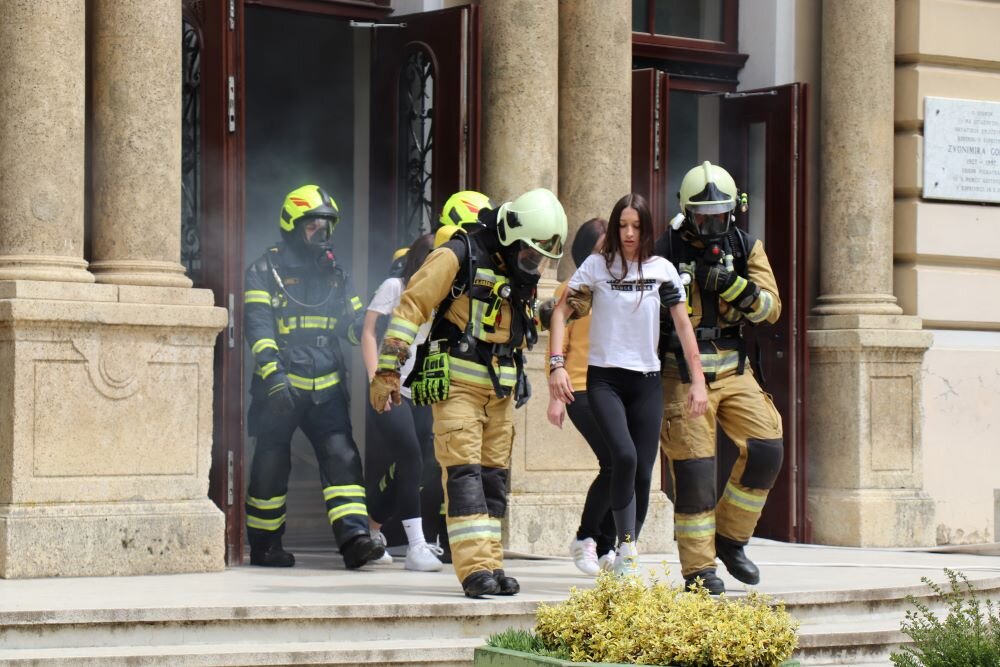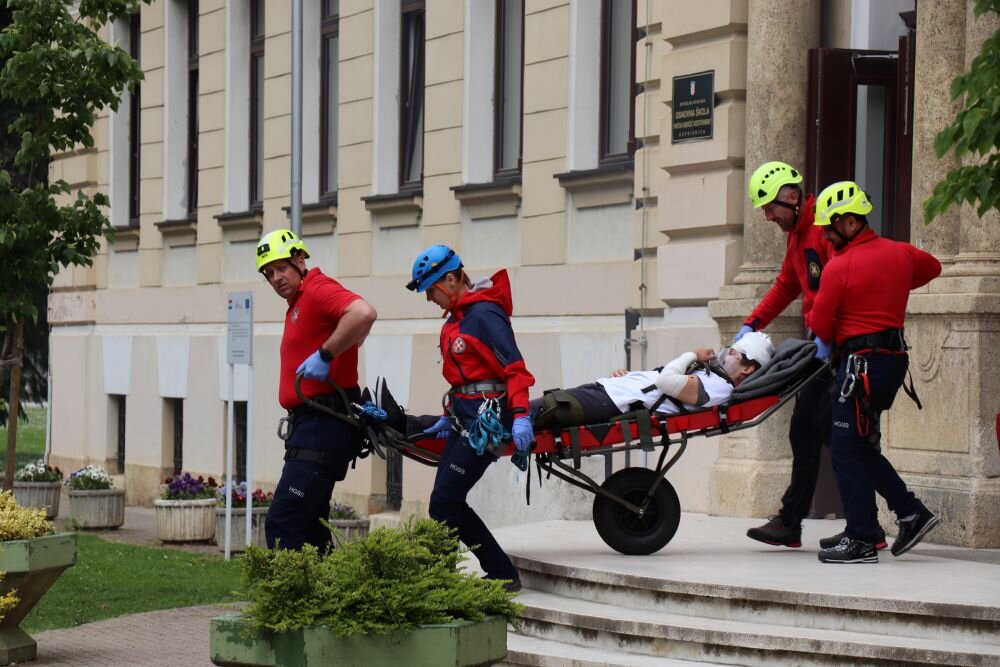
2 are basic trainings in occupational safety and every worker should have them
16. August 2023.
You’ve decided to introduce surveillance cameras, but the workers’ council is against it? Here’s what you can do
30. August 2023.Photo: Evacuation exercise in elementary school Antun Nemčić Gostovinski Koprivnica/Sonja Markić
Evacuation exercises are a key element of a comprehensive occupational safety plan for companies and institutions around the world. These exercises play a key role in preparing employees for potential hazards and contingencies and ensure safe and effective action in the event of emergency evacuations. Below we will explore why evacuation exercises are needed, how they are held, what organizations should be conducted and who participates in them.
Only conducting exercises is prescribed and Law on Safety at Work (Official Gazette, No. 71/14, 118/14, 154/14, 94/18, 96/18), in Article 55, paragraph 5 where it is stated that the employer is obliged to ‘inform the worker with Evacuation plan and emergency rescue and conduct practical evacuation and rescue exercises at least once every two years’. Definitions and provisions of evacuation have been processed in the Fire Protection Act (Official Gazette, No. 92/10) and the Civil Protection System Act (Official Gazette, No. 82/15, 118/18, 31/20)
Why evacuation exercises are needed

Photo: Evacuation exercise in elementary school Antun Nemčić Gostovinski Koprivnica/Sonja Markić
Evacuation exercises are crucial because they provide employees with the necessary knowledge and experience to respond to emergencies such as fire, natural disasters or other hazards.
Regular exercises:
- Increase safety awareness: Employees become aware of potential hazards in the workplace and develop instinctive reactions.
- Reduce panic: Practicing evacuation reduces panic in real emergency situations, increasing control and efficiency.
- Check the effectiveness of plans: The exercises help identify vulnerabilities in evacuation plans and allow for improvements.
How evacuation exercises are held

Photo: Evacuation exercise in elementary school Antun Nemčić Gostovinski Koprivnica/Sonja Markić
Evacuation exercises should be well structured and thoroughly planned. Key steps include planning, communication, simulation, analysis, and repetition.
Specifically, planning involves defining the objectives of the exercise, selecting the scenario (fire, earthquake, bombing) and determining the participants and their roles.
After that, it is necessary to inform all employees about the upcoming exercise and goals in order to achieve the maximum level of participation.
It is very important that you perform an exercise with a realistic scenario, including sounds, lights and eventual obstacles.
After the exercise, conduct an analysis to identify successes and shortcomings and identify areas for improvement.
Once you have mastered all this, repeat the exercises regularly to maintain a high level of preparedness.

Photo: Evacuation exercise in elementary school Antun Nemčić Gostovinski Koprivnica/Sonja Markić
How often are the exercises held and who participates
The frequency of evacuation exercises varies depending on industry, organization size and local regulations. In general, exercises should be carried out at least once a year. All employees participate in them to be familiar with evacuation procedures.
Then, the leaders, that is, the persons responsible for coordinating the evacuation and conducting the exercise. Emergency services are also present. Specifically, depending on the scenario, local emergency services may be involved to provide support and assess the response.
Furthermore, there is a security team. It is an internal team in charge of planning and conducting evacuation exercises, and finally external experts can participate in the evacuation exercise. More specifically, in some cases, organizations may hire outside experts to evaluate the exercise and provide advice.


